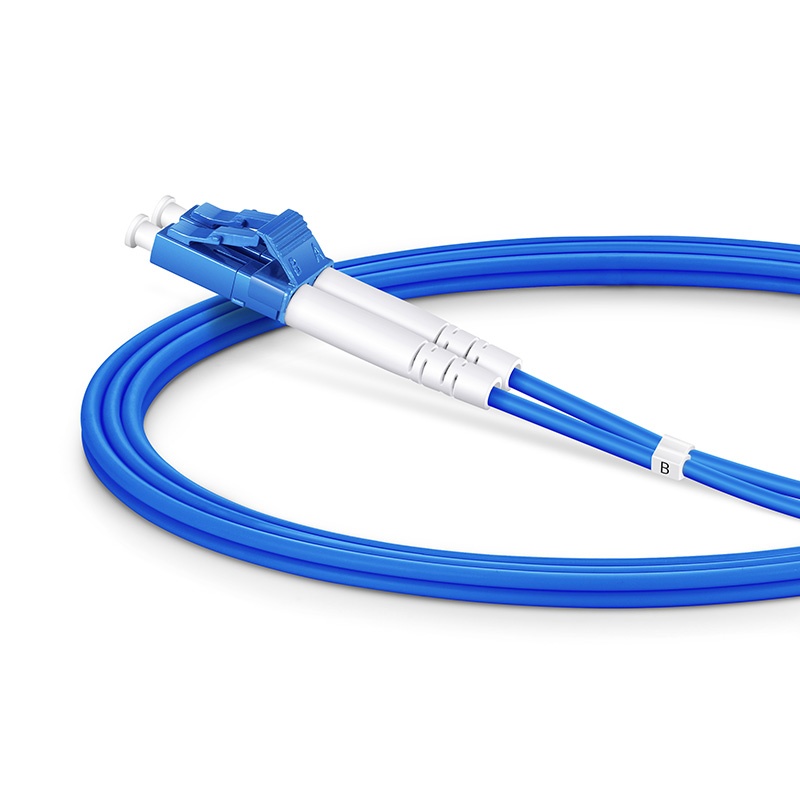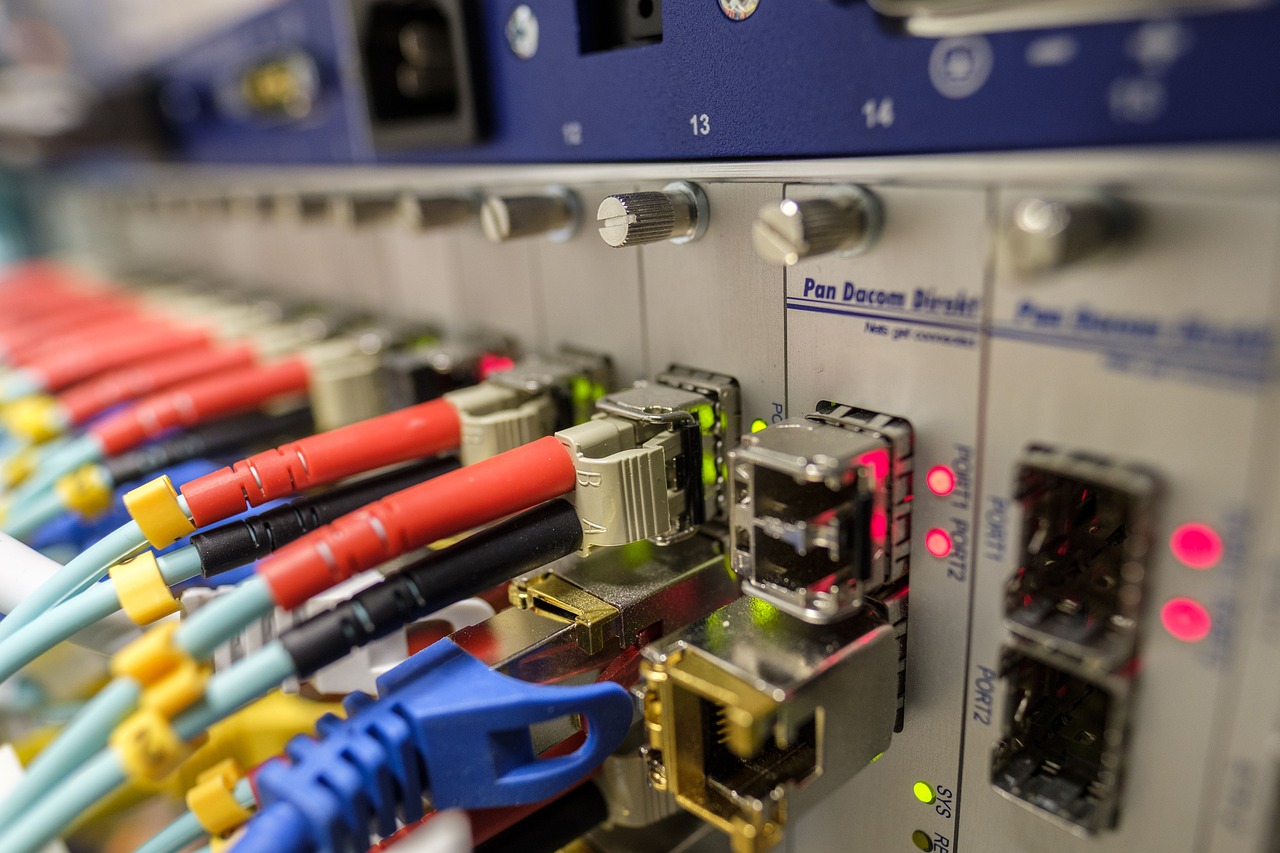4 Key Differences Between LC and Duplex LC Connectors for Fiber Optic Communications

Introduction to LC and Duplex LC Connectors
What Are LC Connectors?
LC connectors, short for Lucent Connector or Little Connector, are small form-factor fiber optic connectors used in high-density connections. They are half the size of traditional connectors, making them ideal for space-constrained environments. The LC connector features a 1.25mm ceramic ferrule and a push-pull mechanism for easy insertion and removal. Its design allows for quick and secure connections, making it popular in data center and telecommunications applications.
The Dual Nature of Duplex LC Connectors
Duplex LC connectors consist of two separate fibers within a single housing, allowing for bidirectional communication. This duplex configuration is essential for transmitting and receiving signals simultaneously, making it suitable for applications requiring full-duplex communication. The duplex LC connector maintains the compact size of the standard LC connector while accommodating dual fibers, providing a practical solution for duplex communication needs.
Why These Connectors Matter in Fiber Optics
LC and Duplex LC connectors play a crucial role in fiber optic communications due to their compact size, high performance, and versatility. Their ability to support high-density connections makes them valuable in modern networking environments where space optimization is essential. Additionally, their reliability and ease of use contribute to their widespread adoption in various industries, including telecommunications, enterprise networking, and data centers.
Understanding the Design and Application of OS2 Single Mode Connectors
The Basics of OS2 Single Mode
When it comes to fiber optic communications, OS2 single mode connectors are designed to facilitate the transmission of data over long distances with minimal signal loss. These connectors are specifically engineered for use with single mode fiber, which has a smaller core size compared to multimode fiber. The reduced core size allows for a single pathway for light to travel through, resulting in less signal dispersion and enabling the transmission of data over extended distances.
Compatibility with LC and Duplex LC
OS2 single mode connectors are fully compatible with both LC and Duplex LC connectors, offering seamless integration into existing fiber optic networks. This compatibility ensures that organizations can leverage their current infrastructure while benefiting from the enhanced capabilities of OS2 single mode connectors. By utilizing LC or Duplex LC connections with OS2 single mode fiber, businesses can achieve reliable long-distance communication without the need for significant network reconfiguration.
Why OS2 Single Mode is Essential for Long-Distance Communication
The deployment of OS2 single mode connectors is essential for achieving reliable long-distance communication in fiber optic networks. With its ability to minimize signal loss and maintain data integrity over extended distances, OS2 single mode fiber is well-suited for applications that require high bandwidth and low latency across vast geographic areas. This makes it an ideal choice for telecommunications providers, internet service providers, and enterprises seeking to establish robust connectivity between distant locations.
The Role of LC and Duplex LC in OS2 Deployments
LC and Duplex LC connectors play a pivotal role in facilitating the deployment of OS2 single mode fiber for long-distance communication. Their compact form factor and efficient design make them well-suited for connecting high volumes of fibers within limited space, ensuring seamless integration with OS2 single mode infrastructure. By utilizing LC or Duplex LC connectors in conjunction with OS2 single mode fiber, organizations can effectively establish reliable long-haul connections while optimizing their network footprint.
The Role of G.657.A1 Fiber in Enhancing Connectivity
G.657.A1 fiber, also known as bend-insensitive fiber, is a specialized type of optical fiber that offers enhanced flexibility and resilience to bending. This unique characteristic makes it particularly well-suited for deployment in environments where tight bends or cable management constraints are prevalent. G.657.A1 fiber is designed to maintain optimal signal transmission performance even when subjected to sharp bends, ensuring reliable connectivity in challenging installation scenarios.
Introduction to G.657.A1 Fiber
G.657.A1 fiber is engineered to be fully compatible with LC and Duplex LC connectors, enabling seamless integration into existing fiber optic networks. Its compatibility with these connectors allows organizations to leverage the benefits of G.657.A1 fiber without requiring extensive infrastructure modifications. This compatibility ensures that the deployment of G.657.A1 fiber can be achieved with minimal disruption to existing network configurations, providing a cost-effective solution for enhancing connectivity.
Its Compatibility with LC and Duplex LC Connectors
Enables easy integration into current network setups
Facilitates efficient utilization of existing connector infrastructure
Minimizes the need for costly connector replacements
How G.657.A1 Fiber Improves Network Performance
The implementation of G.657.A1 fiber contributes significantly to enhancing network performance, especially in environments where space constraints and bending challenges are prevalent. By choosing the right connectors for G.657.A1 fiber deployments, organizations can ensure optimal signal integrity and minimize potential signal loss due to bending or tight cable management.
The Importance of Connector Choice
Selecting LC or Duplex LC connectors ensures seamless connectivity with G.657.A1 fiber
Proper connector choice minimizes signal attenuation caused by bending
Enhances overall network reliability and performance
Protecting Your Network from Rodents: The Importance of Rodent Resist Features
Fiber optic networks are susceptible to damage caused by rodents, posing a significant threat to their integrity and functionality. Rodents, such as rats and mice, are known for gnawing on cables and infrastructure components, leading to potential service disruptions and costly repairs. Therefore, implementing rodent resist features is crucial to safeguarding fiber optic networks from these destructive pests.
The Threat Rodents Pose to Fiber Optic Networks
Rodents pose a serious threat to fiber optic networks due to their natural instinct to chew on objects they encounter. When rodents come into contact with fiber optic cables, they may mistake them for food or simply gnaw on them out of curiosity. This behavior can result in cable damage, compromising signal transmission and network reliability. Additionally, the presence of rodents near network infrastructure increases the risk of cable contamination and potential safety hazards.
How Rodent Resist Features Work with LC and Duplex LC Connectors
Rodent resist features are designed to fortify fiber optic cables and connectors against rodent-related damage. These features often include specialized coatings or materials that deter rodents from chewing or gnawing on the cables. When integrated with LC and Duplex LC connectors, rodent resist features provide an additional layer of protection, ensuring that the critical connection points remain secure and operational even in rodent-prone environments.
Implementing Rodent Resist Solutions in Your Infrastructure
Conduct a thorough assessment of your network infrastructure to identify areas vulnerable to rodent intrusion.
Utilize rodent resist cables and connectors equipped with protective layers or coatings.
Implement physical barriers or enclosures around sensitive network components to prevent rodent access.
Regularly inspect and maintain the integrity of rodent resist features to ensure ongoing protection against potential damage.
By incorporating rodent resist solutions into your fiber optic infrastructure, you can mitigate the risk of service disruptions caused by rodent activity while maintaining the reliability and performance of your network. This proactive approach helps safeguard your investment in fiber optic communications and minimizes the impact of external environmental factors on network operations.
See Also
Contrasting LC/UPC vs. SC/UPC Connectors for Multimode Fiber Cables
Comparing MTP and LC/UPC Cables for 100G Optical Networking
Premium Singlemode Fiber Patch Cables with LC/UPC Connectors
Exploring Features of 1*16 CH SC/APC Single Fiber DWDM Mux Demux
Insight into 2.0×5.0mm SC UPC Field Assembly Optical Connector


